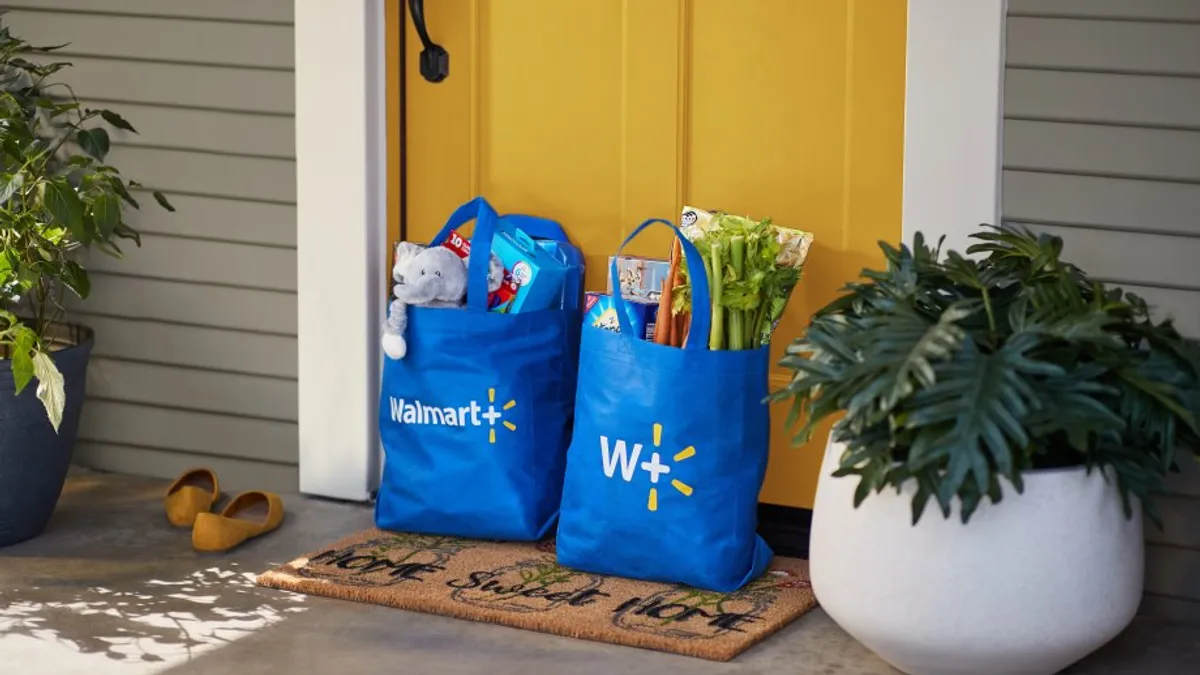Dive Brief:
- Walmart has grown its delivery pilot with Instacart to include parts of New York City, according to spokespeople for the companies.
- The pilot, which started last year in Los Angeles, San Francisco, San Diego and Tulsa, Oklahoma, arrived in Brooklyn, Queens and the Bronx on Tuesday, according to The Wall Street Journal, which first reported the news. The service is not available in Manhattan.
- The expansion of Walmart and Instacart’s relationship strengthens competition with Amazon, Target and other retailers fighting for consumers’ e-commerce dollars.
Dive Insight:
Walmart, which does not operate brick-and-mortar locations in New York City, is leveraging its stores near the city to fulfill delivery orders through Instacart for customers in the metropolitan area.
Walmart decided to grow its Instacart partnership after favorable results from the pilot in the three California markets and Tulsa, a Walmart spokesperson wrote in an email. “[Walmart] found that customers in areas where our store coverage isn’t as dense enjoy the prices and convenience that Walmart and Instacart provides,” the email said.
The pilot will make tens of thousands of Walmart items, including groceries, home goods and electronics, available for delivery in as fast as one hour to customers in those areas, an Instacart spokesperson said in an emailed statement.
In addition to Instacart, Walmart has worked with several third-party delivery providers in recent years, including DoorDash and Skipcart, but has had trouble holding onto some of its e-commerce partnerships. Walmart used to offer delivery in New York City through Jet.com, which it bought in 2016 but then discontinued four years later.
The mass retail giant, which has been ramping up its same-day delivery, is looking to strengthen its competitive advantage against rivals Amazon and Target in the battle for e-commerce spending. Last week, Walmart announced it is offering its white-label delivery platform to other companies with a new line of business called Walmart GoLocal. In March, the retailer dropped the $35 purchase minimum for its two-hour Express delivery service, which was launched last spring. In 2019, Walmart launched in-home delivery in select markets.
Walmart is now well ahead of rival Amazon with grocery e-commerce as more shoppers gravitate to Walmart for food purchases, according to the latest survey from research firm TABS Analytics. Walmart executives said during an earnings call in August that both grocery and e-commerce sales grew 6% year-over-year and that grocery was one of the top categories driving growth for the company’s second quarter.
While in-store shopping has picked up for the retailer, the company is continuing to invest in an omnichannel strategy and use the advantage of its fleet of more than 5,000 stores and clubs in the U.S. for order fulfillment.











